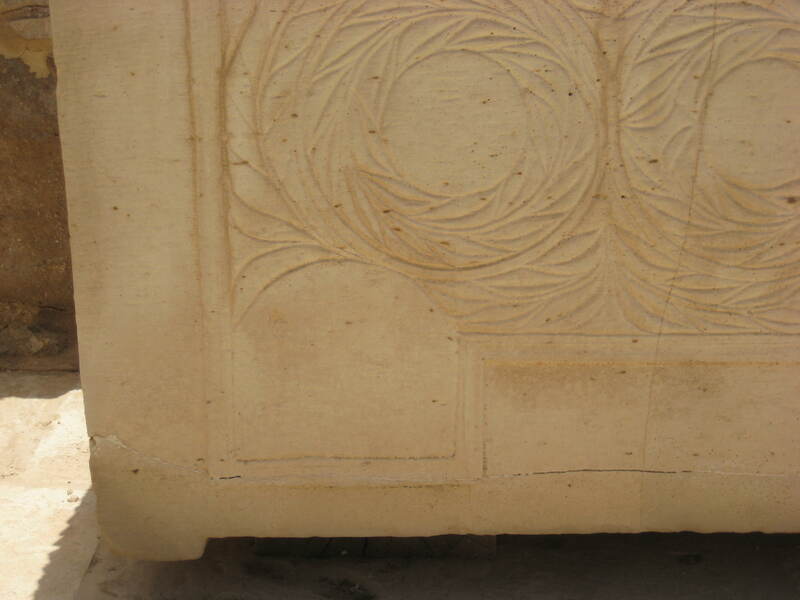Samaritan sarcophagi
Type:
Sarcophagi
Date:
Fourth to sixth centuries
Location or Findspot (Modern-Day Country):
Israel/Palestinian territory
Medium:
Limestone
Description:
The Samaritans were (and still are) an ancient offshoot of Judaism. They lived mostly in north-central Israel (called Samaria), but in late antiquity there were also Samaritan settlements and synagogues as far away as Carthage, Rome, and Thessaloniki. Samaritans hold that only the Torah is a sacred text, not the Prophets and Writings that, together with the Pentateuch, make up the Hebrew Bible. They do not recognize rabbinic writings as authoritative. And they consider Mount Gerezim God's holy mountain, site of Abraham's near-sacrifice of Isaac, not Mount Moriah (the Temple Mount) in Jerusalem.
The low, narrow limestone caskets shown here were found in Nablus, in the Samaritan heartland, and details in the relief decoration suggest Samaritan rather than Jewish or pagan use. At the lower corners of both sarcophagi, the rounded form on the left is empty, whereas the one on the right is filled with stylized vegetation. The iconography derives from Deuternonomy 11:29: when the Hebrews entered the Land of Israel, God proclaimed blessings on Mount Gerezim and curses on nearby Mount Ebal. The blessed Mount Gerezim, focus of Samaritan veneration, is flourishing, while the other mountain—Ebal, but perhaps also Moriah—is devoid of life.
The low, narrow limestone caskets shown here were found in Nablus, in the Samaritan heartland, and details in the relief decoration suggest Samaritan rather than Jewish or pagan use. At the lower corners of both sarcophagi, the rounded form on the left is empty, whereas the one on the right is filled with stylized vegetation. The iconography derives from Deuternonomy 11:29: when the Hebrews entered the Land of Israel, God proclaimed blessings on Mount Gerezim and curses on nearby Mount Ebal. The blessed Mount Gerezim, focus of Samaritan veneration, is flourishing, while the other mountain—Ebal, but perhaps also Moriah—is devoid of life.
Relevant Textbook Chapter(s):
2
Repository and Online Resources:
• The sarcophagi are on display at the Good Samaritan Museum outside Jerusalem.
Image Credits:
Linda Safran




